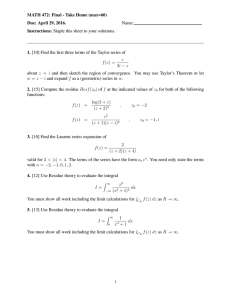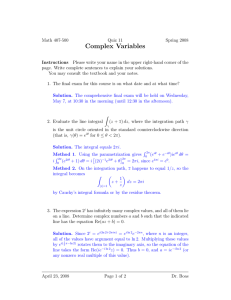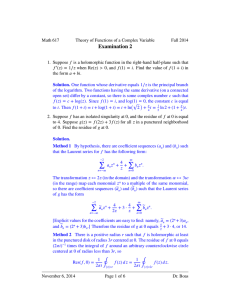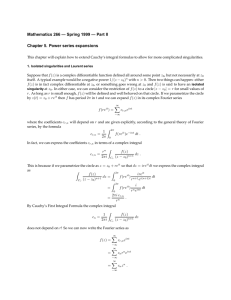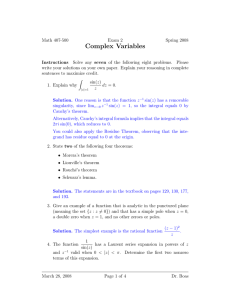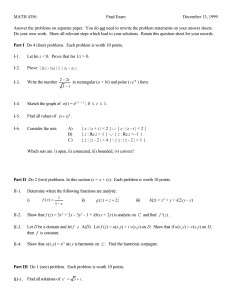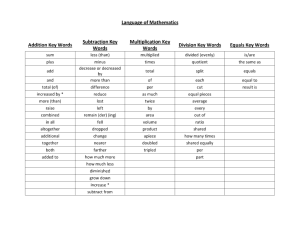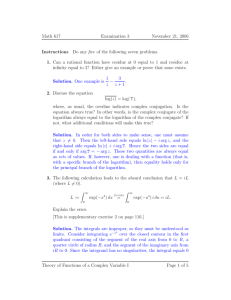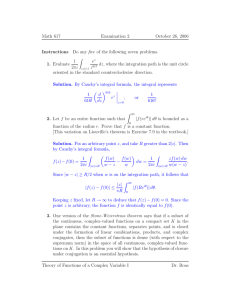Complex Variables Quiz 6 - Spring 2008
advertisement
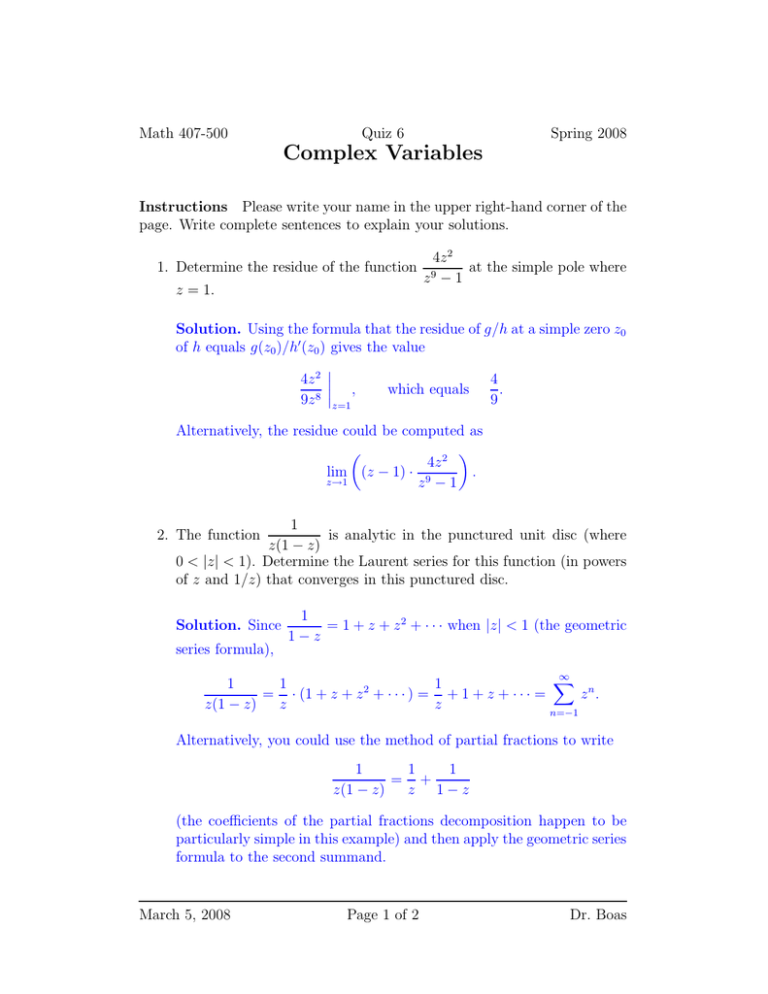
Math 407-500 Quiz 6 Spring 2008 Complex Variables Instructions Please write your name in the upper right-hand corner of the page. Write complete sentences to explain your solutions. 4z 2 at the simple pole where 1. Determine the residue of the function 9 z −1 z = 1. Solution. Using the formula that the residue of g/h at a simple zero z0 of h equals g(z0 )/h′ (z0 ) gives the value 4 4z 2 , which equals . 8 9z z=1 9 Alternatively, the residue could be computed as 4z 2 . lim (z − 1) · 9 z→1 z −1 1 is analytic in the punctured unit disc (where z(1 − z) 0 < |z| < 1). Determine the Laurent series for this function (in powers of z and 1/z) that converges in this punctured disc. 2. The function Solution. Since series formula), 1 = 1 + z + z 2 + · · · when |z| < 1 (the geometric 1−z ∞ X 1 1 1 2 = · (1 + z + z + · · · ) = + 1 + z + · · · = zn . z(1 − z) z z n=−1 Alternatively, you could use the method of partial fractions to write 1 1 1 = + z(1 − z) z 1−z (the coefficients of the partial fractions decomposition happen to be particularly simple in this example) and then apply the geometric series formula to the second summand. March 5, 2008 Page 1 of 2 Dr. Boas Math 407-500 Quiz 6 Spring 2008 Complex Variables 3. Evaluate the complex line integral Z cos(z) dz, |z|=1 sin(z) where the integration path is the unit circle oriented in the standard counterclockwise direction. Solution. The integrand is analytic inside the curve except for a simple pole where z = 0, and the integral equals 2πi times the residue of the integrand at that pole. The residue equals cos(z) namely 1, , d sin(z) dz z=0 so the value of the integral is 2πi. March 5, 2008 Page 2 of 2 Dr. Boas
